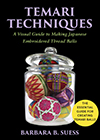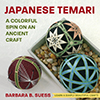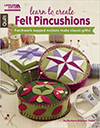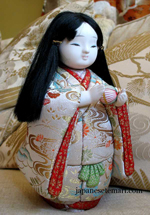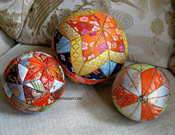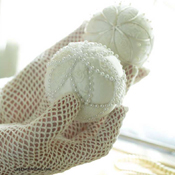More about Japanese kimekomi
The history of kimekomi (pronounced kee may ko mee) dates back to the first half of the eighteenth century. It is believed that while working at the Kamo Shrine in Kyoto, a thrifty craftsman created the first doll of its kind out of fabric scraps and willow tree wood found along the banks of the Kamo River.
Dollmaking, kimekomi style, is still a favorite pasttime for many Japanese craftsmen and women. Kits containing precarved bodies, fabric, heads and hands can be purchased in many, many different styles. If you can find a teacher, you can pursue a series of study that will lead to mastering certification in kimekomi doll making techniques.
These three balls are very heavy and feel as if they are made on a base of solid wood. I purchased them from an antique seller in Japan who said they date from the 1940's.
The designs in Japanese Kimekomi have their roots in Japanese culture, but also have a contemporary Western twist. While some of the designs may be found stitched on temari balls, for others we have drawn on the rich American tradition of patchwork quilt blocks to inspire new patterns.
Complete directions on making kimekomi handballs can be found in the book, along with full-size templates for 15 different designs for balls and a design for eggs.
How to make kimekomi handballs
1. Use a Smoothfoam ball (Dylite, NOT Styrofoam). Draw lines on ball with a Sharpie.
2. Use a hot knife to carve grooves into the ball on the lines.
3. Cut out fabric pieces using templates in the book.
4. Tuck fabric down into the grooves.
5. Glue on the trim to cover the joints.
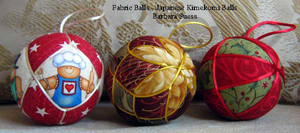
Satin Cord for trim - we like the #1 lightweight size. The #2 size is also good.
